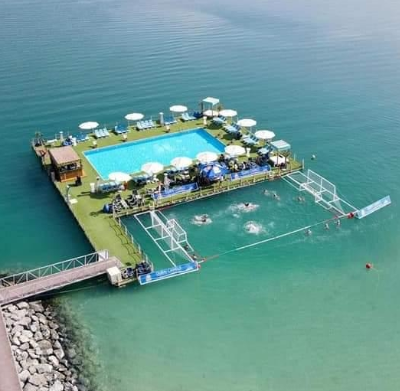Water polo combines the rules of basketball, soccer and hockey with wrestling and swimming. The sport is played all over the world and was in fact the first Olympic team sport. As popular as it is in certain parts of the world, it can be a little confusing. Here are water polo basics which will help you better understand the sport:
- Players can only use one hand to hold the ball.
- Teams consist of 6 field players and 1 goalie as well as substitutes.
- The object of the game is to score in the opposite team's goal like in soccer.
- Only the goalie can use two hands when he is within 5 meters of his own goal.
- Players advance the ball by passing to teammates or swimming with the ball in front of them.
- There are personal fouls like in basketball.
- There are man advantages like in hockey.
- Like in basketball, teams have a shot clocks that vary by age groups.
Physical contact is the rule rather than the exception as players maneuver for position in front of the goal. The referee indicates fouls by blowing a whistle. There are ordinary fouls, which give the fouled player a free throw and major fouls which lead to the fouling player being ejected for 20 seconds.
Each quarter starts with teams lined up on opposite goal lines. On the whistle, the teams sprint toward center pool for the ball. The player arriving first at the ball gains possession for his team. The team gaining possession advance the ball by swimming or passing the ball. Goals are scored when the ball completely passes between the front of the goal posts. It need not slam into the back of the net, although water polo shots can exceed 50km's per hour. Following a goal, the ball is put into play as soon as all players are back in their respective halves of the pool.
The offense is similar to basketball, with the center forward positioning himself 2-meters in front of the opposition's goal. The rest of his team form a semi circle (perimeter) around him similar to how basketball is setup. Much of the action in front of the goal consists of the offensive team passing the ball to the center forward. The center forward's object is to either score or draw exclusion fouls that will give the offensive team a man-up advantage. The perimeter players score by taking outside shots.
A "fast break" occurs when a team receives the ball and sprints down the pool before the defenders can set up a defense.


